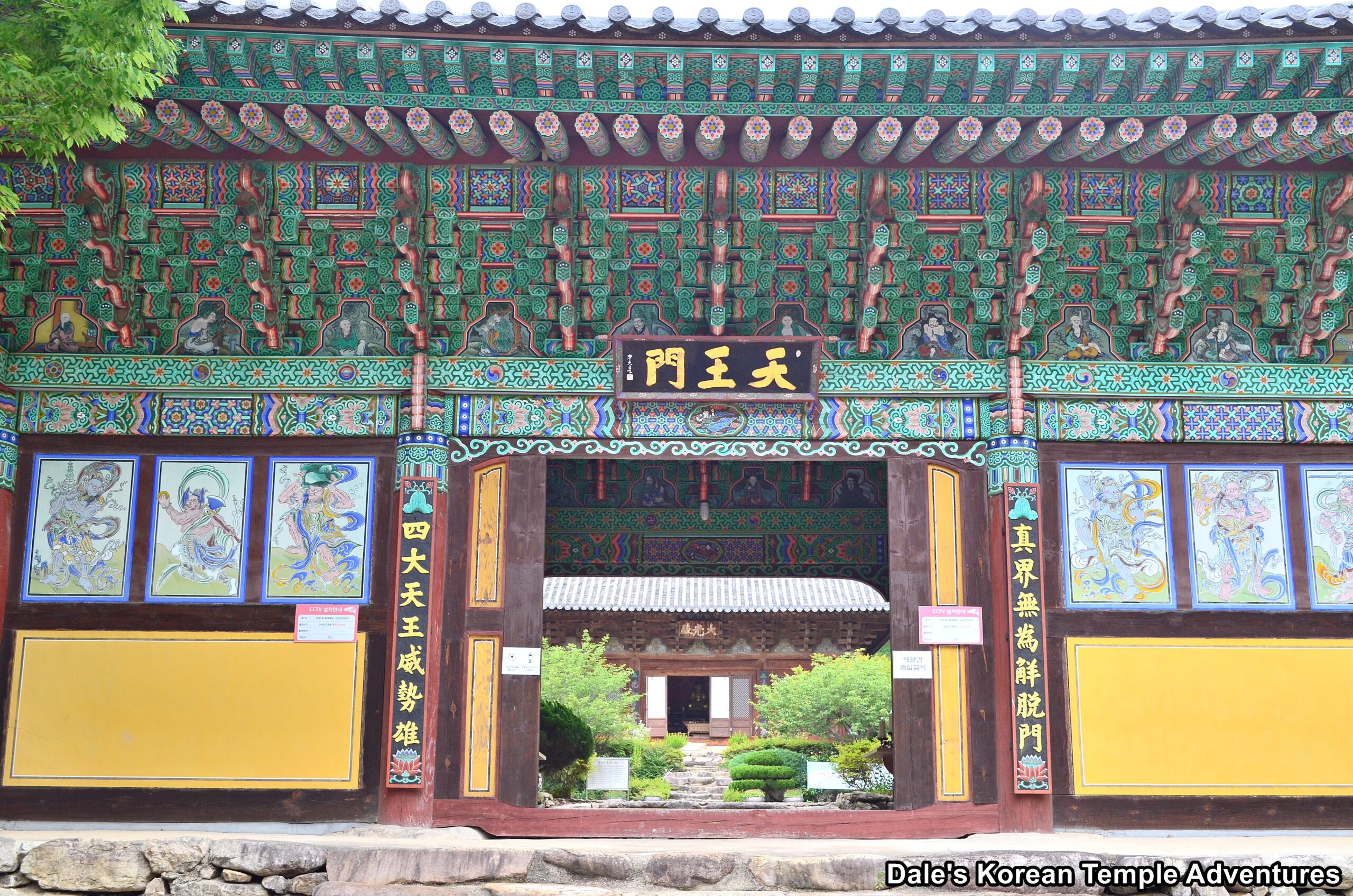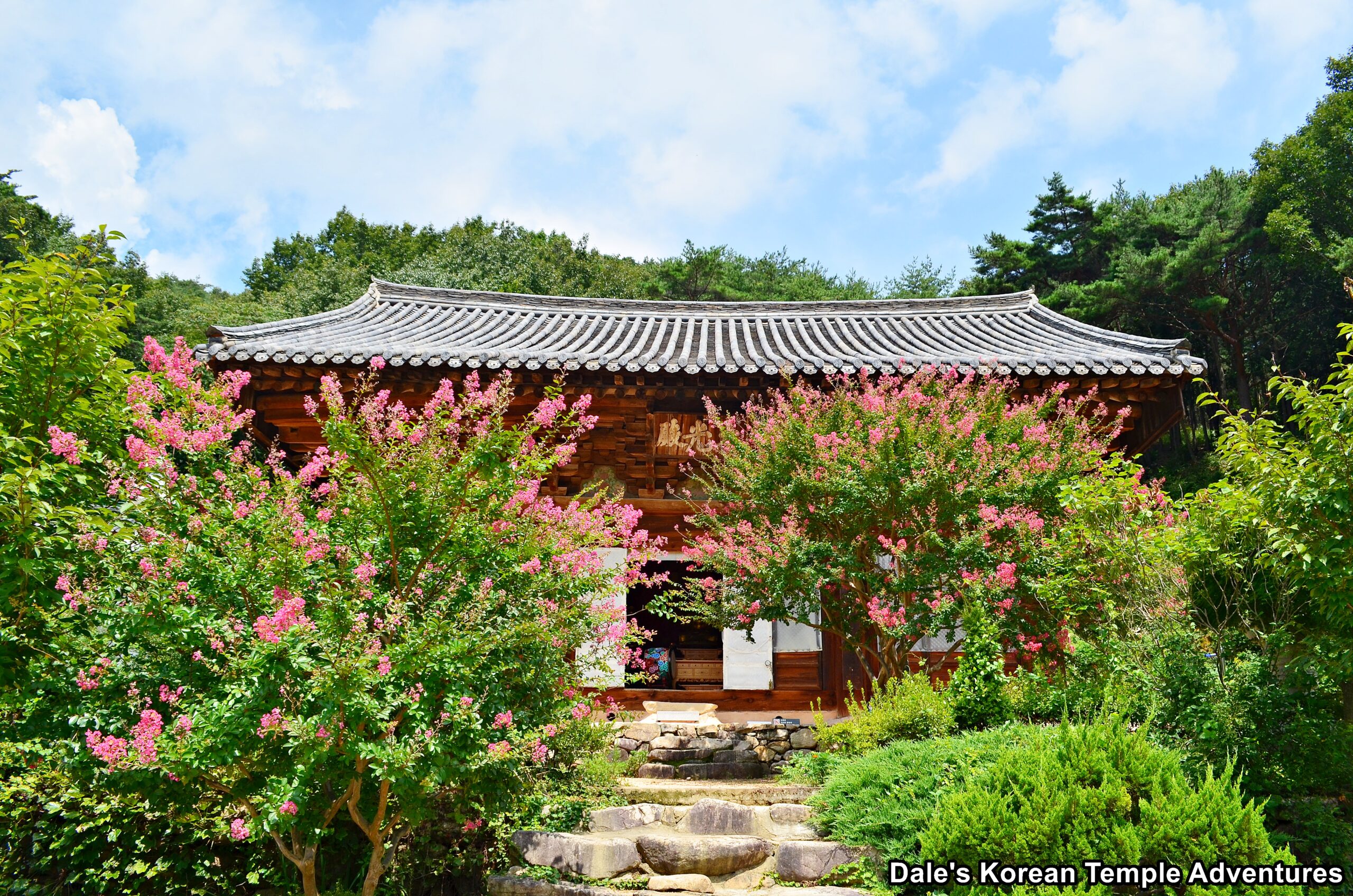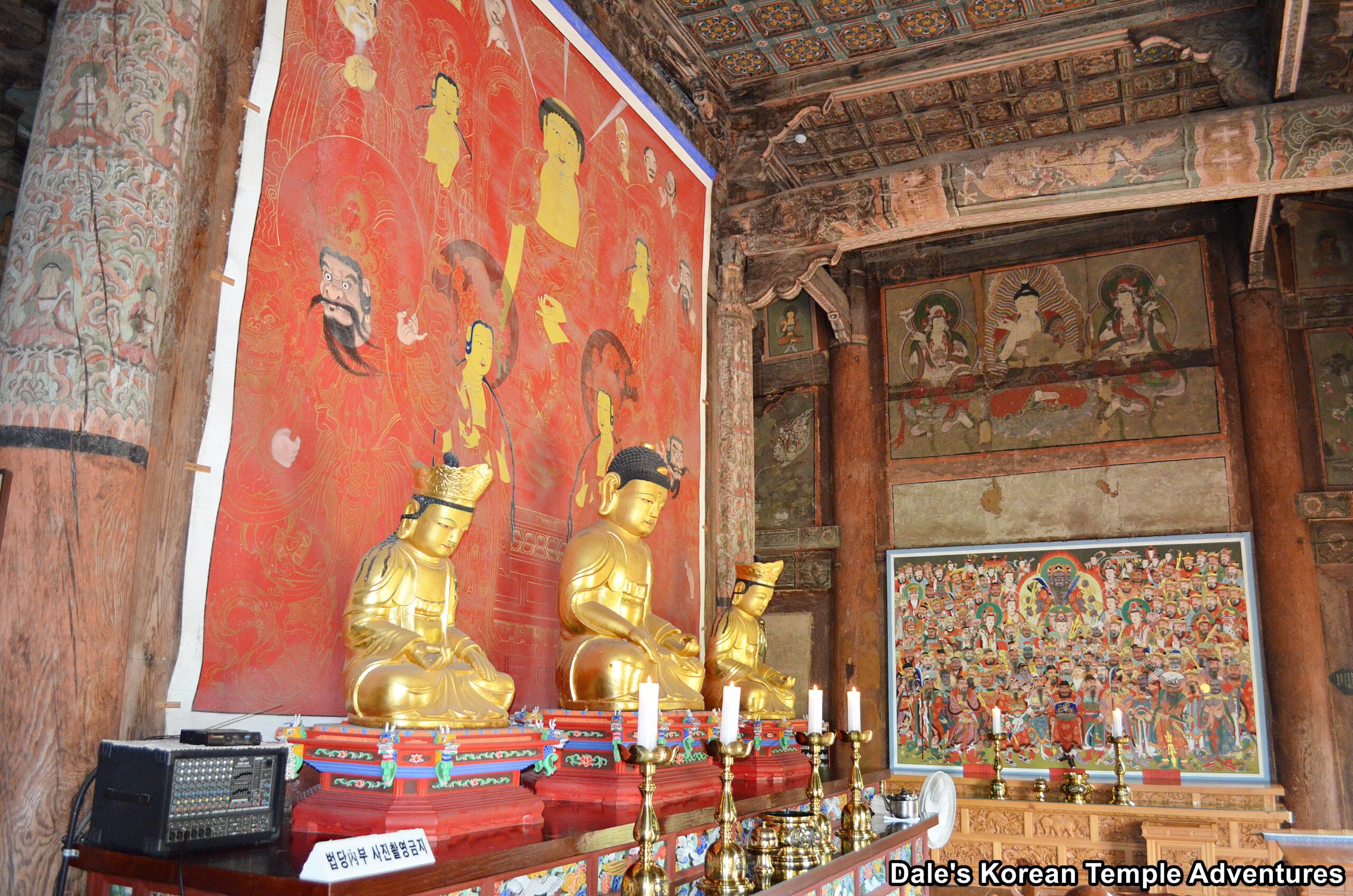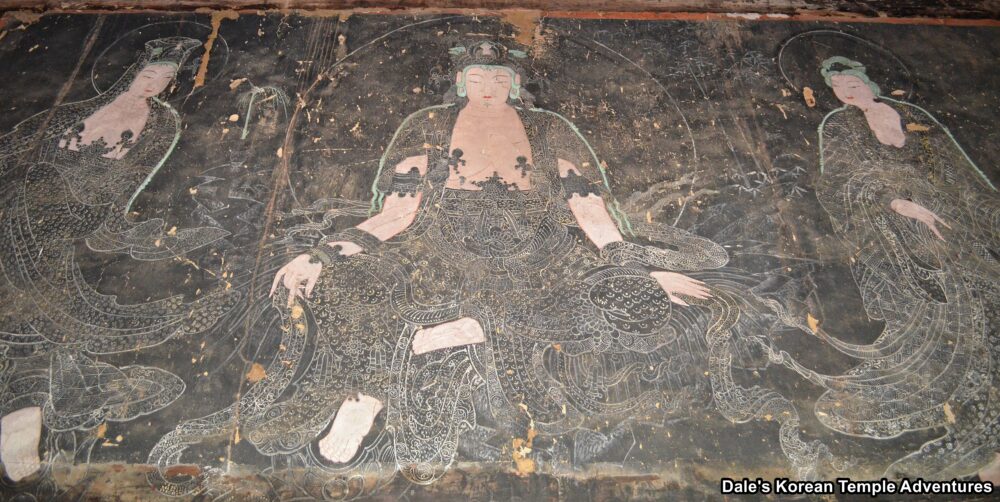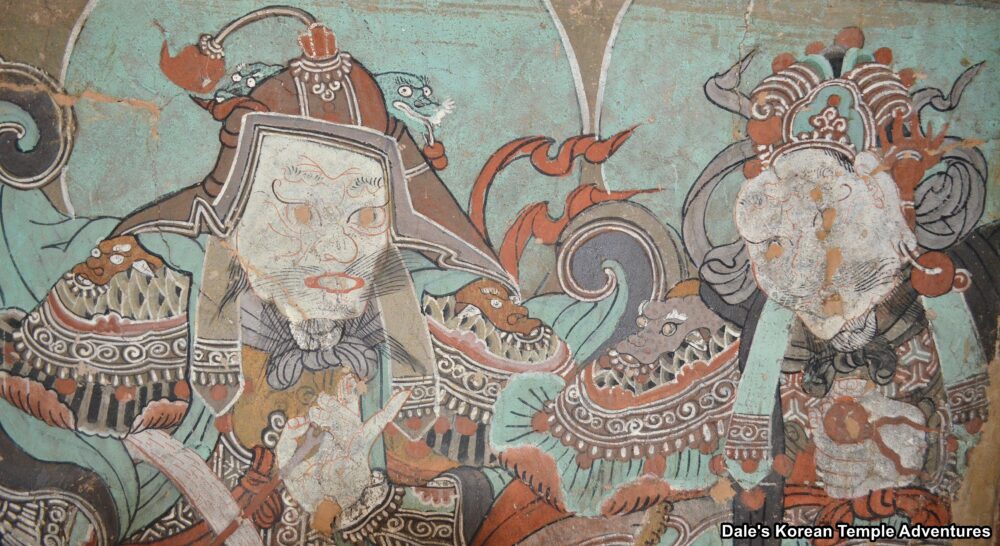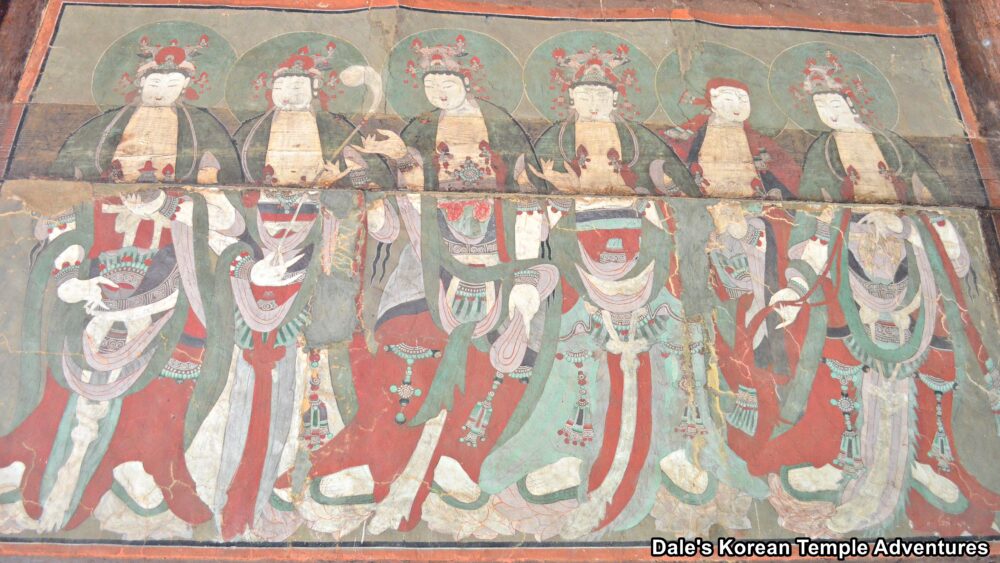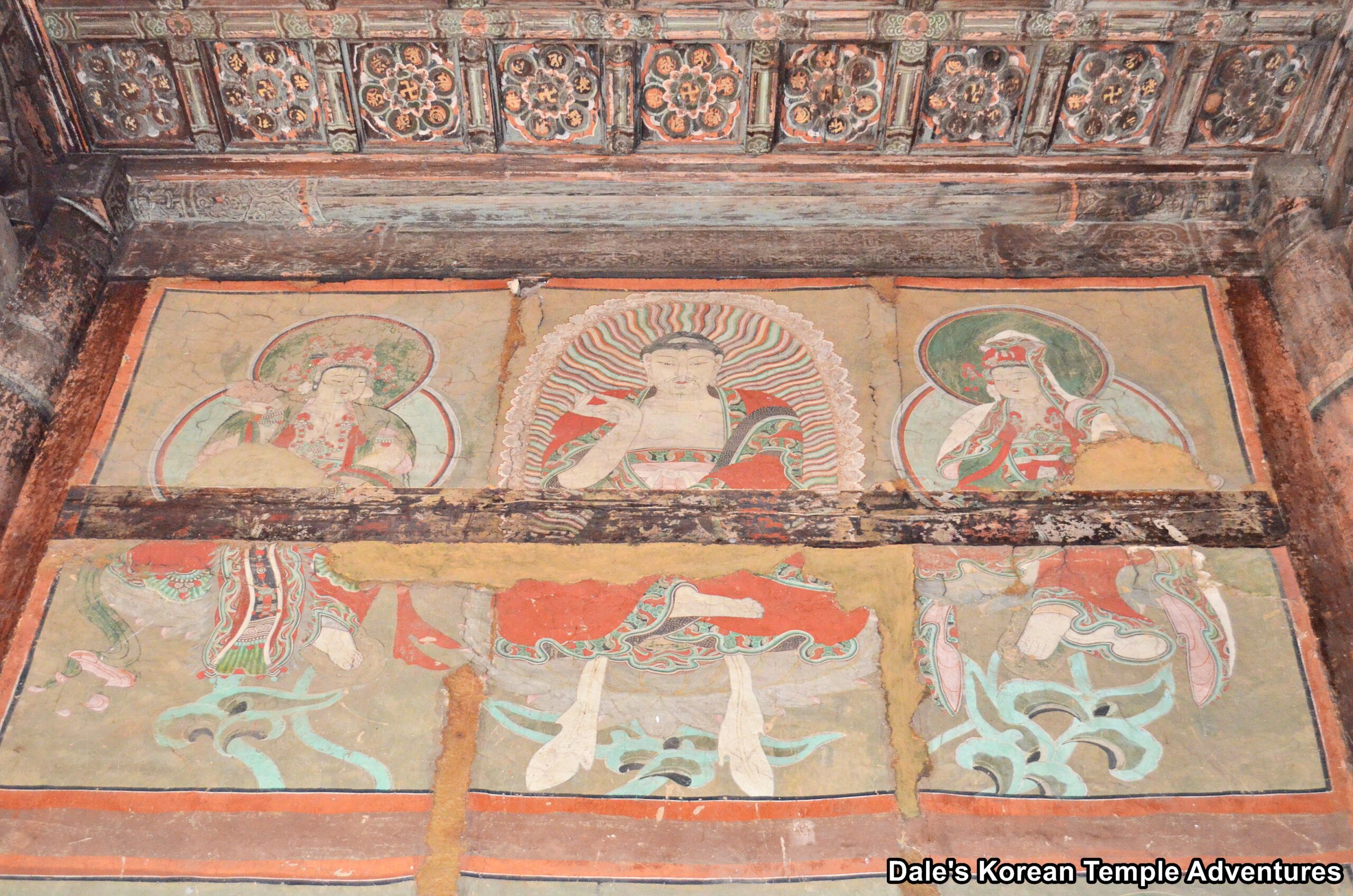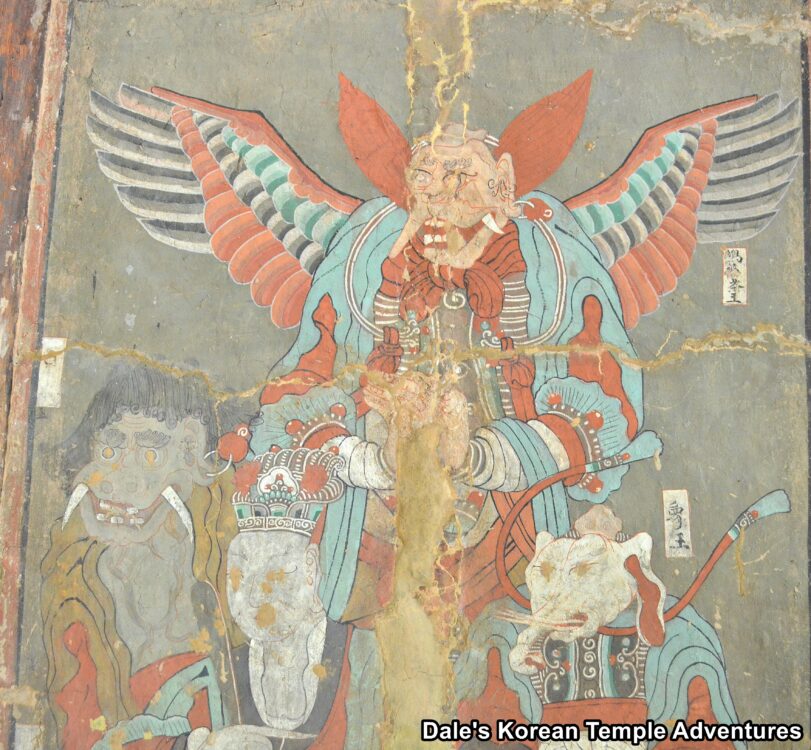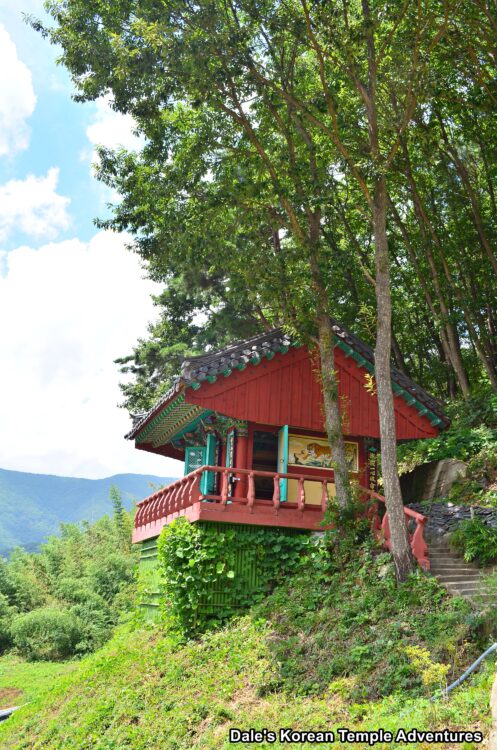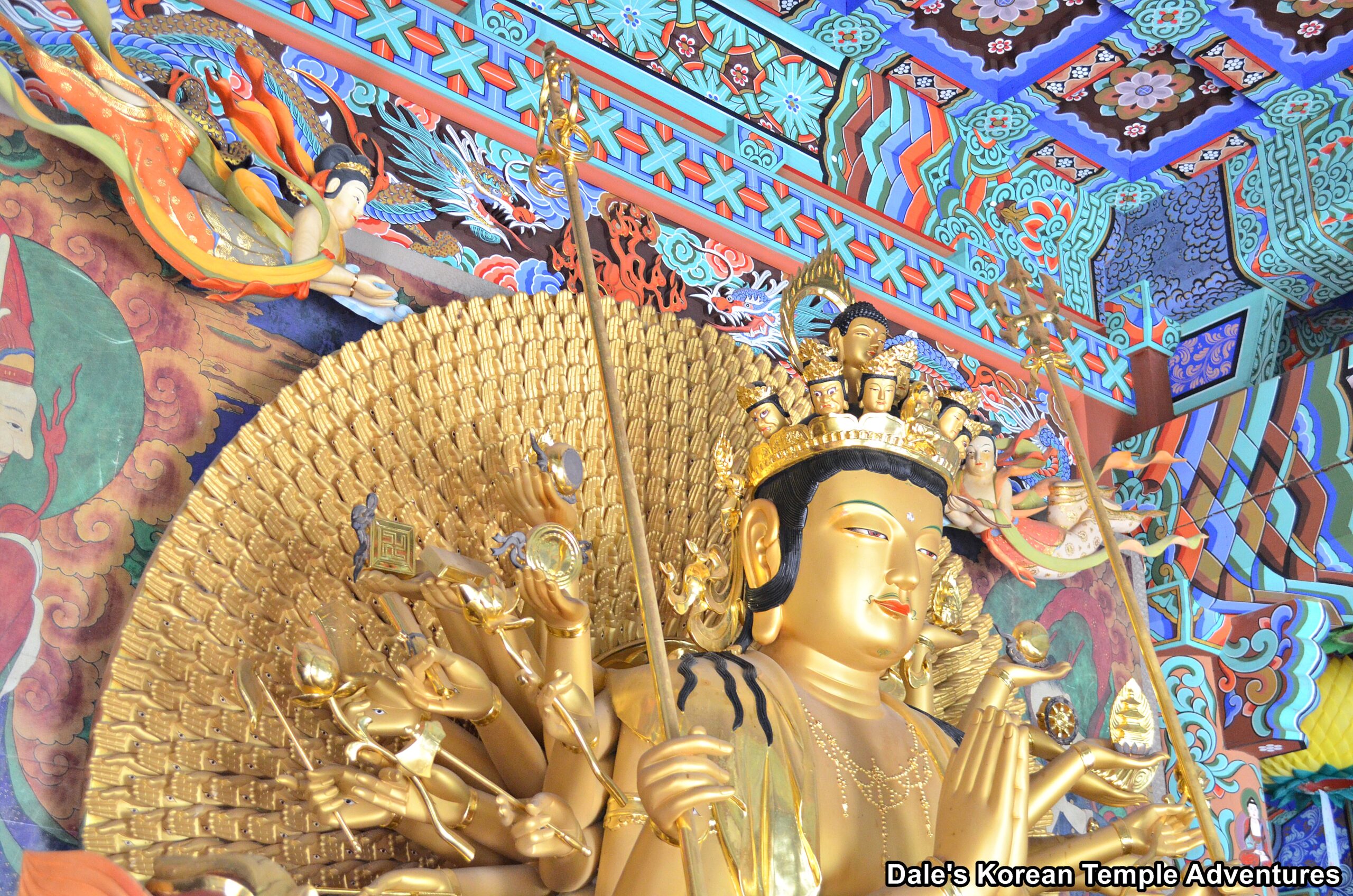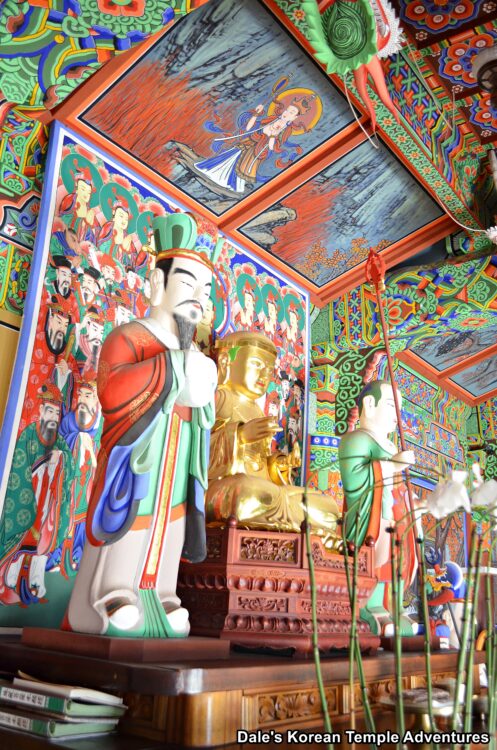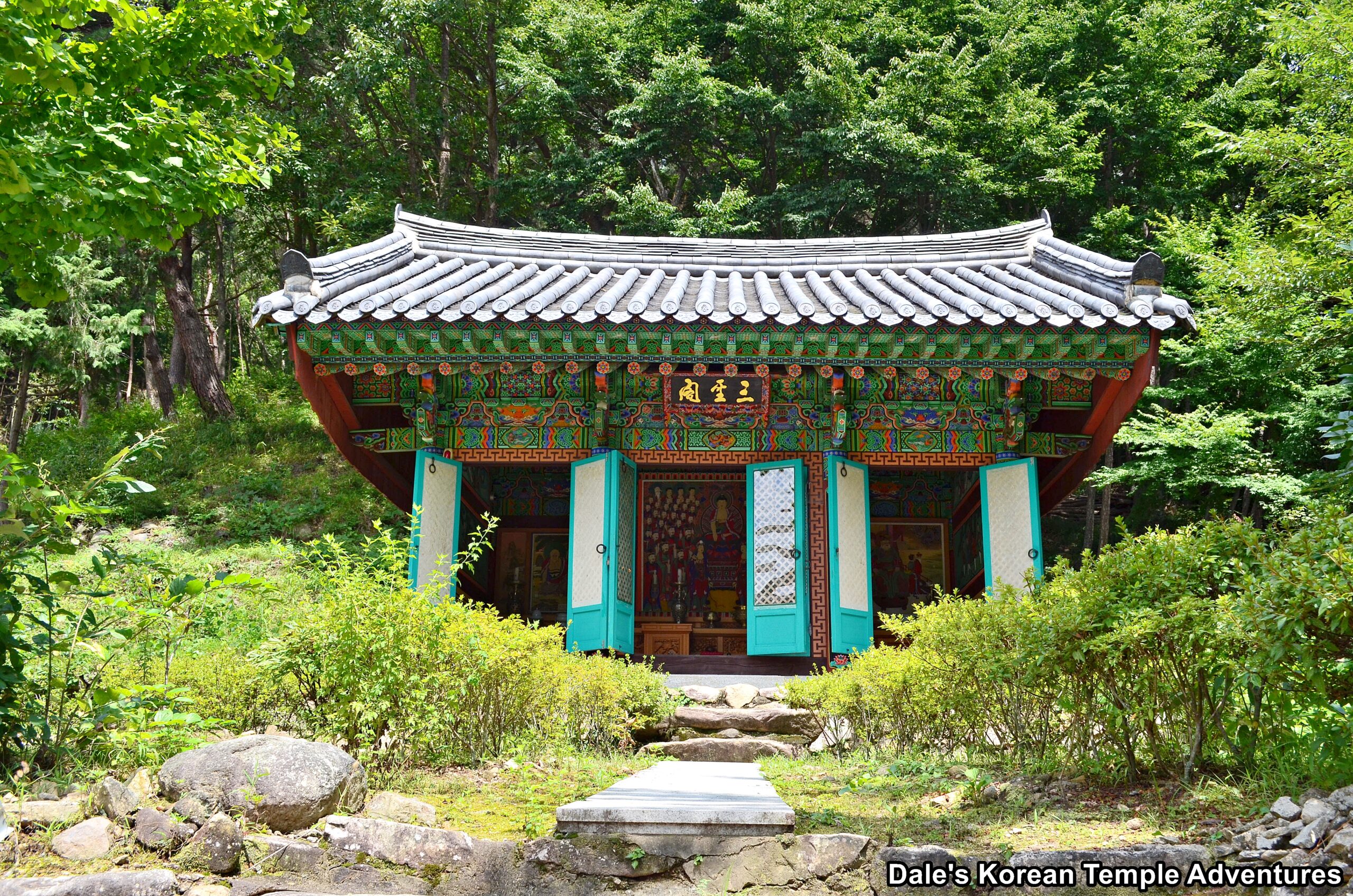Sinheungsa Temple – 신흥사 (Yangsan, Gyeongsangnam-do)

Temple History and Myth
Sinheungsa Temple in Yangsan, Gyeongsangnam-do, which shouldn’t be confused with the more famous temple of the same name in Sokcho, Gangwon-do, means “New Enjoyment Temple” in English. Sinheungsa Temple is located on the foot of Mt. Yeongchuksan (1081 m) on the western side of the mountain. If this mountain sounds familiar, it should, as it houses Tongdosa Temple on the eastern side of Mt. Yeongchuksan.
There are some that claim that Sinheungsa Temple was first established in 301 A.D. during the Gaya Confederacy (42-532 A.D.). And while it’s plausible, it’s highly unlikely with the introduction of Buddhism entering into the neighbouring kingdoms of the Baekje Kingdom (18 B.C. – 660 A.D.) in 384 A.D. and the Silla Kingdom (57 B.C. – 935 A.D.) in 527 A.D. And without any archaeological or architectural evidence, it would seem that Buddhism entered this territory sometime after 301 A.D.
With all that being said, and like so many other great temples in Korea, Sinheungsa Temple has a great myth surrounding its creation. According to myth, King Suro (42?-199 A.D.), the legendary founder of the Gaya Confederacy, was praying on the temple grounds when he was advised that there was a poisonous dragon/snake in a neighbouring jade pond. He was instructed to drive out this poisonous dragon/snake from the countryside. So praying earnestly, the temple building stones turned into fish and drove out the dragon/snake from the countryside and into the East Sea. That’s why now, if you knock on a stone at Sinheungsa Temple, it’ll sound like metal.
After its foundation, very little is known until the mid-Joseon Dynasty (1392-1910), when Sinheungsa Temple was rebuilt in 1582. During the Imjin War (1592-1598), the temple was destroyed by the invading Japanese in 1592. According to a record recovered during a partial repair of the main hall at Sinheungsa Temple in 1988, it was discovered that the Daegwang-jeon Hall had been rebuilt in 1657. From that date, the entire temple complex was slowly rebuilt.
A major restoration and rebuilding period occurred at Sinheungsa Temple during the 1980’s. Not only was the Daegwang-jeon Hall repaired, but starting in 1983, the Chilseong-gak Hall, the Sanshin-gak Hall, the Cheonwangmun Gate, the Iljumun Gate, and the Guksa-dang Hall were rebuilt, as well. This restoration and rebuilding continues to the present day with new additions like the Gwaneum-jeon Hall, the Myeongbu-jeon Hall, and the Samseong-gak Hall being built in the eastern courtyard.
In total, Sinheungsa Temple is home to two Korean Treasures. It’s also worth noting that the head monk at Sinheungsa Temple isn’t a big fan of pictures or videos being taken at the temple, so be forewarned if you do in fact visit Sinheungsa Temple.
Temple Layout
You first approach Sinheungsa Temple up an unevenly paved country road next to a meandering stream. You’ll need to walk about five hundred metres up this country road and past the uniquely designed Iljumun Gate to gain entry to the main courtyard at Sinheungsa Temple. Crossing over a bridge with handrails appearing in the form of a dragon’s head and body, you’ll see the walled-off compound that is the main temple courtyard at Sinheungsa Temple.
Just to the right of this is the temple’s Cheonwangmun Gate. Four expressive incarnations of the Four Heavenly Kings take up residents inside this second entry gate at Sinheungsa Temple. The exterior walls to the Cheonwangmun Gate are beautifully, yet intimidatingly, adorned with various guardian murals.
Appearing on the other side of the Cheonwangmun Gate, and now standing squarely in the western temple courtyard, you’ll notice the Jong-ru (Bell Pavilion) to your immediate left. Housed inside this one story structure are the four traditional Buddhist percussion instruments, which include a Brahma Bell, a Dharma Drum, a Wooden Fish Drum, and a Cloud Plate Drum. Of the four, it’s the blue Mokeo (Wooden Fish Drum) that will draw most of your attention with its slender body and fierce dragon head. It’s also in this part of the temple, even further to the left, that you’ll find the monks quarters, visitors centre, and study halls at Sinheungsa Temple. And to your immediate right of the Cheonwangmun Gate is a large, long lecture hall.
However, it’s the temple structure straight ahead of you that’s the main attraction at Sinheungsa Temple. It’s the Daegwang-jeon Hall, which was first built in 1657, and it’s Korean Treasure #1120. The exterior wall murals that once adorned the Daegwang-jeon Hall are all gone: washed away by the passage of time. Although the Daegwang-jeon Hall was built in the mid-Joseon Dynasty, it retains a lot of the features of the early Joseon Dynasty. Stepping inside the Daegwang-jeon Hall, you’ll immediately notice that the interior is completely filled with historic murals that date back to the mid-17th century, while a few others were painted in the 18th century. In total, there are nearly fifty of these murals, and they’re designated as Korean Treasure #1757. Also, the interior is decorated with elaborate dancheong colours that are believed to have been created at the time of the Daegwang-jeon Hall’s construction. The triad of statues on the main altar is occupied by the central image of Birojana-bul (The Buddha of Cosmic Energy).
Specifically, as for the collection of fifty murals housed inside the Daegwang-jeon Hall, the inner, outer, and upper half walls are adorned with these murals, as are the cross beams and the tall inner columns to the Daegwang-jeon Hall. The murals are meant to depict the Buddha’s world. The murals that adorn the eastern inner walls of the Daegwang-jeon Hall consist of a Yaksayeorae-bul (The Buddha of Medicine, and the Buddha of the Eastern Paradise) triad in the upper central portion of the wall. Murals of the Palsang-do (The Eight Scenes from the Buddha’s Life) adorn the outer columns and horizontal supports. There are also paintings dedicated to Agwi (Hungry Spirits) on the lower under wall on the far left corner of the Daegwang-jeon Hall.
The murals on the western wall, on the other hand, take up the entire wall. In total, the wall is divided into three parts, which contain murals dedicated to an Amita-bul (The Buddha of the Western Paradise) triad at the top. There are then six Bodhisattvas in the middle, and the Four Heavenly Kings at the base of the three parts. Spread throughout the entire interior of the Daegwang-jeon Hall are guardian murals. And to the rear of the main altar, on the reverse side of the main altar wall, is a dark blue mural dedicated to three incarnations of Gwanseeum-bosal (The Bodhisattva of Compassion). There is one larger seated central image of the Bodhisattva of Compassion that’s joined on either side by two smaller standing murals of Gwanseeum-bosal. While some of the murals housed inside the Daegwang-jeon Hall were repaired during the early 19th century, both the Yaksayeorae-bul triad and the Amita-bul triad on the east and west walls remain as they were first painted.
To the left rear of the the Daegwang-jeon Hall is the newly constructed Nahan-jeon Hall. Housed inside the Nahan-jeon Hall are sixteen beautiful statues of the Nahan (The Historical Disciples of the Buddha) that are joined on the main altar by the central image of Seokgamoni-bul (The Historical Buddha). Past the Nahan-jeon Hall, and up a winding trail to the rear of the Nahan-jeon Hall, is the Sanshin-gak Hall that looks over the entire temple grounds. The right exterior wall is adorned with a ferocious tiger. Stepping inside the small shaman shrine hall, you’ll be greeted by a solitary painting dedicated to Sanshin (The Mountain Spirit). In the painting, Sanshin is holding a feather fan in his right hand, and the tiger is cuddled up close to the Mountain Spirit with its head and paw placed lovingly/protectively on the lap of Sanshin.
To the right of the older part of the temple is the eastern temple courtyard. There are three newer temple shrine halls that occupy this part of the temple grounds. The first is the newly built Gwaneum-jeon Hall. Housed inside the Gwaneum-jeon Hall, and seated on the main altar, is a beautifully ornate statue dedicated to Gwanseeum-bosal. This multi-armed and headed incarnation of the Bodhisattva of Compassion is joined by a statue of Yongwang (The Dragon King) that stares inquisitively up at Gwanseeum-bosal. As for the interior of the Gwaneum-jeon Hall, it’s filled with beautiful murals dedicated to the various incarnations of Gwanseeum-bosal, including the back wall of the main altar that’s occupied by three all-white incarnations of the Bodhisattva of Compassion, including one reminiscent of the historic one found at Muwisa Temple.
To the right of the Gwaneum-jeon Hall is the Myeongbu-jeon Hall. This hall is dedicated to Jijang-bosal (The Bodhisattva of the Afterlife). The exterior walls are adorned with frightening and redemptive murals of the afterlife. Stepping inside the Myeongbu-jeon Hall, you’ll notice a golden-capped statue of Jijang-bosal seated on the main altar. Above the main altar is one of the most amazing murals dedicated to Jijang-bosal in all of Korea. The Bodhisattva of the Afterlife stands on a stone island outcropping surrounded by the fires of the underworld, as Jijang-bosal attempts to save the souls of the dead. The main altar statue inside the Myeongbu-jeon Hall is joined by large wooden seated statues of the Siwang (The Ten Kings of the Underworld). And the rest of the Myeongbu-jeon Hall is ornately occupied by vibrant murals of guardians and fowl like peacocks.
The final shrine hall that visitors can explore at Sinheungsa Temple is the Samseong-gak Hall, which is situated just to the north of the Myeongbu-jeon Hall. This newly constructed shaman shrine hall is filled with three murals. The three murals are dedicated to Chilseong (The Seven Stars), Dokseong (The Lonely Saint), and Yongwang (The Dragon King).
How To Get There
Sinheungsa Temple is one of the more difficult temples to get to because of its relatively remote location. From the Wondong train station in south-western Yangsan, you can catch Bus #2. Take this bus for nineteen stops and get off at the “Yeongpo – 영포” stop. From here, you should be able to see a large brown sign saying Sinheungsa Temple on it. From this sign, hang a right for five hundred metres, and you’ll find the temple.
Overall Rating: 8.5/10
This little known temple is packed with both natural and architectural beauty. The main highlight, without a doubt, is the 17th century Daegwang-jeon Hall with its equally historic murals that occupy every square inch of the interior. It’s truly spellbinding with its fifty historic Buddhist murals. Adding to these are the murals and iconography that occupy the half dozen shrine halls and the pair of entry gates. While you’ll have to watch for the curmudgeonly head monk at Sinheungsa Temple, and while a bit remote in location, Sinheungsa Temple is definitely worth a visit!
